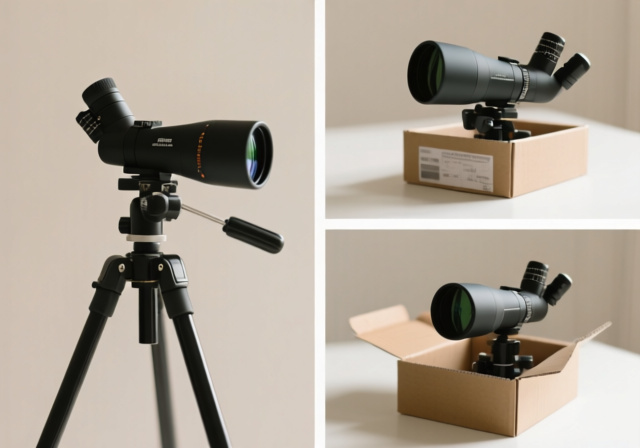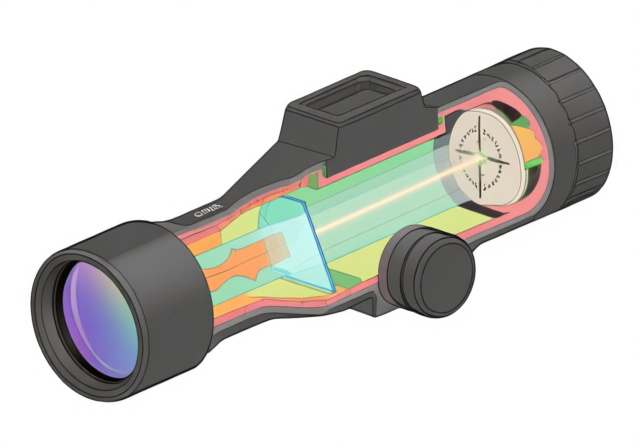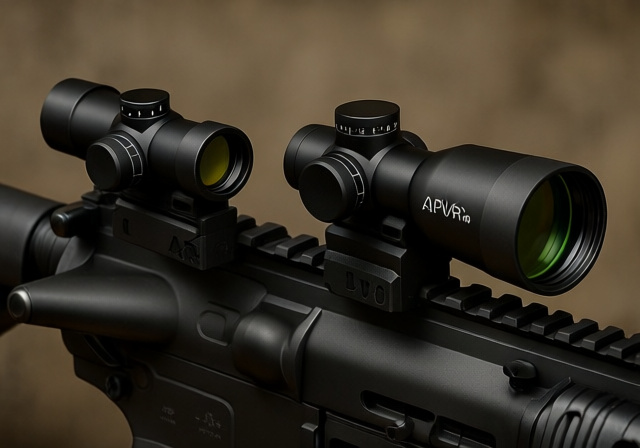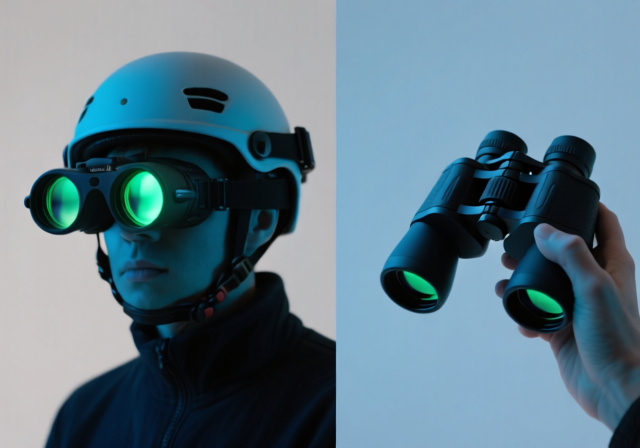

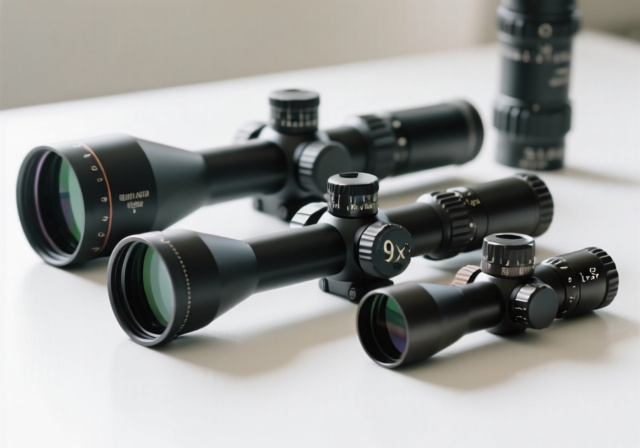

Standing on a ridge in Montana, I glassed the basin below through my rifle scope. A nice mule deer buck stood at 400 yards, but my 3-9x scope struggled to give me the confidence needed for an ethical shot. That moment taught me a critical lesson about rifle scope magnification that I’ve carried through 15 years of hunting across North America.
Choosing the right magnification isn’t about getting the most power—it’s about matching your scope to your specific hunting or shooting needs. After guiding 50+ hunters and testing countless combinations, I’ve learned that 90% of hunters need a versatile 3-9x scope, while western hunters benefit from 4-16x ranges for longer shots.
This guide breaks down everything you need to know about rifle scope magnification, from basic concepts to real-world applications across different distances and scenarios. Whether you’re a beginner or an experienced shooter, you’ll find clear recommendations based on your specific needs.
Quick Summary: Match magnification to your typical shooting distance: 1-4x for 0-100 yards, 3-9x for 100-300 yards, 6-12x for 300-500 yards, 10-18x for 500-800 yards, and 15-25x for 800+ yards.
| Application | Recommended Magnification | Typical Distance Range | Key Consideration |
|---|---|---|---|
| Eastern Deer Hunting | 3-9x | 50-200 yards | Wider field of view for close shots |
| Western Big Game | 4-16x | 200-600 yards | Higher magnification for open country |
| Tactical/AR-15 | 1-6x or 1-8x | 0-500 yards | True 1x for close quarters |
| Long Range Competition | 15-25x | 600-1500+ yards | Maximum precision for small targets |
| Varmint Hunting | 6-24x | 200-500 yards | High magnification for small targets |
The 1x per 100 yards rule provides a solid starting point. If you typically shoot at 300 yards, consider a scope with at least 3x magnification. However, this is just a guideline—your specific needs may vary based on target size, shooting position, and environmental conditions.
✅ Pro Tip: Most hunters overestimate the magnification they need. A 3-9×40 scope will handle 90% of hunting situations effectively, and you’ll appreciate the wider field of view when game appears unexpectedly close.
Scope magnification numbers follow a simple format: the first number (or range) represents magnification power, while the second number indicates the objective lens diameter in millimeters. For example, a 3-9×40 scope can adjust from 3x to 9x magnification and has a 40mm objective lens.
Magnification works by using curved glass elements to bend light rays, making distant objects appear closer. At 3x magnification, a target at 300 yards appears as if it’s at 100 yards. At 9x, that same target looks like it’s only 33 yards away.
Magnification Power: How many times closer an object appears through the scope compared to the naked eye. 3x magnification makes objects appear three times closer.
Fixed power scopes maintain a single magnification level (e.g., 6x or 10x). They offer advantages in simplicity, durability, and optical quality per dollar. I’ve used fixed 6x scopes for years on dedicated deer rifles, appreciating their reliability and consistent sight picture.
Variable power scopes provide an adjustable magnification range (e.g., 3-9x). These offer versatility but add complexity and potential failure points. Modern variable scopes have become incredibly reliable, making them the popular choice for most applications.
“Most hunters can consistently hit a deer in the vitals out to 200 yards or more with a 3x or 4x scope.”
– Experienced hunter from Sniper’s Hide forum
The key advantage of variable power lies in adaptability. Use lower magnification for scanning and close shots, then crank up the power for precise long-range aiming. This flexibility makes variable scopes ideal for most hunting situations.
For shots under 100 yards, keep magnification between 1-4x. Higher power makes it difficult to find targets quickly and provides too narrow a field of view. In thick timber or brush situations, I’ve missed shot opportunities because I was zoomed in too far.
Tactical shooters often prefer 1-6x scopes for this range, maintaining true 1x for both-eyes-open shooting. For dangerous game hunting at close range, low-power variable scopes or even reflex sights provide better target acquisition speed.
This is the sweet spot for most deer hunting, and 3-9x magnification shines here. At 3x, you get a wide field of view for spotting game. At 9x, you can precisely place shots at 300 yards.
The 3-9×40 configuration became the industry standard for good reason—it handles 90% of hunting situations effectively. I’ve taken animals from 35 yards to 325 yards with this magnification range, finding it offers the perfect balance of versatility and practicality.
For shots in the 300-500 yard range, consider 6-12x magnification. Western hunters shooting across canyons or open prairie benefit from the extra power for identifying vitals and judging wind drift.
However, remember that higher magnification magnifies every movement. A slight wobble at 6x becomes significant at 12x. I recommend practicing extensively with higher magnifications before attempting long-range shots in the field.
When shooting beyond 500 yards, 10-18x magnification provides the precision needed for small target images. At 600 yards, a deer’s vital area might appear only a few inches wide—higher magnification becomes essential for accurate shot placement.
Long-range shooting also demands attention to other factors: parallax adjustment, fine reticle details, and reliable turret adjustments. Magnification alone won’t make you a long-range shooter—it’s just one piece of the puzzle.
For extreme distances of 800 yards and beyond, 15-25x+ magnification is typical. Competition shooters and specialized long-range hunters use these high-power scopes to resolve targets that appear tiny even at maximum magnification.
⏰ Time Saver: Don’t buy a 20x scope for 300-yard hunting. You’ll struggle with target acquisition and field of view. Match magnification to your realistic maximum shooting distance.
At these magnifications, environmental factors like mirage become significant. Often, 20x is less usable than 15x due to heat distortion. Professional long-range shooters frequently dial back magnification to maintain a clear sight picture.
Eastern deer hunting typically involves shorter shots in wooded or semi-forested environments. Most shots occur under 150 yards, with occasional opportunities out to 200-250 yards in fields or clearings.
For this application, 3-9x remains king. The lower end provides quick target acquisition in thick cover, while 9x offers enough precision for field shots. A 2-7x or 2.5-10x scope offers even better close-range performance for those who primarily hunt dense timber.
Field of view matters more than maximum magnification when bucks appear suddenly at 30 yards. I’ve missed easy shots because my scope was dialed to 9x while tracking a deer that closed the distance unexpectedly.
Western hunting presents different challenges. Open country, longer distances, and bigger animals all influence optimal magnification. Shots from 200-500 yards are common, with opportunities extending to 600+ yards in the right conditions.
For western hunting, 4-16x provides excellent versatility. At 4x, you can still scan effectively for game. At 16x, you can precisely place shots at 500+ yards. Some hunters prefer even higher magnification ranges like 5-25x for dedicated long-range hunting.
Remember that western hunts often involve hiking at elevation. Heavy, high-magnification scopes add weight and affect rifle balance. Consider the entire system weight when choosing glass for backcountry hunting.
Tactical shooting demands versatility from contact distance to 500+ yards. This unique requirement explains the popularity of 1-6x and 1-8x scopes on AR platforms. True 1x magnification allows both-eyes-open shooting at close range, while 6-8x provides precision for distance shots.
Reticle choice becomes critical at low magnification. Illuminated reticles with visible center dots excel in 1-4x ranges, helping you find the aiming point quickly in high-stress situations.
Competition disciplines vary widely in magnification needs. PRS shooters often use 5-25x scopes to resolve small targets at distance, while 3-Gun competitors favor 1-6x optics for speed and versatility.
For benchrest competition, where targets are stationary and time limits aren’t a factor, fixed high-power scopes (20-40x) maximize precision. These specialized optics excel in one narrow application but fail in dynamic shooting scenarios.
As magnification increases, field of view decreases dramatically. At 3x, a typical scope might show 30 feet of width at 100 yards. At 9x, that same scope might only show 10 feet.
Narrow field of view creates practical problems. I’ve spent precious seconds searching for a buck through a high-magnification scope, only to have it disappear before I could aim. For hunting, field of view at low magnification often matters more than maximum power.
Weather and lighting significantly affect optimal magnification. In low light conditions, lower magnification often provides better image quality due to brighter images and larger exit pupils.
Mirage becomes a limiting factor at high magnification. On hot days, heat waves distort the image above 15-20x, making higher magnification useless. Professional shooters frequently dial back magnification to combat mirage.
Wind also affects usable magnification. Higher magnification makes reticle drift appear more pronounced, potentially leading to over-correction. Sometimes, slightly lower magnification provides better practical accuracy in windy conditions.
Higher magnification magnifies every wobble and shake. Beginners often shoot better with moderate magnification (3-9x) because their movement appears less pronounced in the sight picture.
Position shooting affects usable magnification too. From a stable bench rest, 20x might be manageable. Off-hand, even 9x can appear shaky. Realistic self-assessment of shooting positions and stability helps choose appropriate magnification ranges.
⚠️ Important: Magnification reveals every flaw in your technique. If you can’t hold steady at 9x, you won’t shoot well at 18x. Build fundamentals before upgrading to high-magnification optics.
The most common mistake is buying too much magnification for your actual needs. Hunters who primarily shoot under 200 yards often buy 6-24x scopes, then struggle with narrow field of view and difficult target acquisition.
I’ve seen hunters miss easy 50-yard shots because they were zoomed in to maximum power and couldn’t find the deer in the scope. More magnification isn’t always better—appropriate magnification is key.
Exit pupil (objective lens diameter divided by magnification) determines brightness. At 9x, a 40mm objective provides 4.4mm of exit pupil. This matches the average human pupil in daylight but becomes limiting in low light.
For dawn and dusk hunting, consider larger objectives (50-56mm) or moderate magnification ranges to maintain bright images. A 2-10×50 might outperform a 4-16×44 in low light conditions despite similar price points.
Reticle complexity should match magnification. Fine reticles excel at high magnification for precision but become invisible at low power. Heavy reticles provide quick target acquisition at low magnification but obscure small targets at high power.
Consider your primary magnification use. For a 3-9x scope used mostly at 3-6x hunting, choose a reticle that’s visible at those powers. First focal plane reticles maintain subtension across magnification ranges but appear small at low power.
Don’t spend your entire optic budget on magnification range. Glass quality, turret precision, and durability often matter more than maximum magnification. A high-quality 3-9x from a reputable manufacturer will outperform a cheap 6-24x scope in almost every situation.
The best rifle scope magnification depends on your application: 3-9x for general hunting (90% of situations), 2.5-10x for versatile hunting in varied terrain, 4-16x+ for western big game and long-range shooting, and 1-6x for close-quarters tactical use.
A 10x scope works well for targets from 200-600 yards. At 200 yards, it provides clear target identification. At 600 yards, it offers sufficient precision for big game hunting though it may feel limited for precision competition.
A 3-9×40 scope excels from 50-400 yards. At 3x, it provides wide field of view for close shots and tracking. At 9x, it offers enough precision for accurate shots at 400 yards for most hunting applications.
For 1000-yard shooting, look for scopes with 15-25x magnification, 50-56mm objective lenses, first focal plane reticles with fine subtensions, and reliable target turrets. Features like parallax adjustment and zero stop become essential at these distances.
For 500-yard shooting, 10-15x magnification works well. This range provides enough power to clearly see targets and make precise shots while maintaining usable field of view and manageable image shake.
For 300-yard shooting, 6-9x magnification is ideal. This provides enough power to clearly see target details and place shots precisely while maintaining reasonable field of view for finding and tracking targets.
Not necessarily better, just different. 4-12x offers more maximum magnification for longer shots but less minimum magnification for close targets. Choose based on your typical shooting distances rather than simply preferring higher numbers.
After years of hunting across North America and testing dozens of scopes, I’ve learned that versatility usually trumps specialization. For most hunters, a quality 3-9×40 or 2.5-10×42 will handle 90% of shooting situations effectively.
Consider your typical shooting distances first. If most shots occur under 200 yards, prioritize low-magnification performance and wide field of view. If you regularly shoot beyond 400 yards, invest in higher magnification ranges but remember that other factors become equally important.
Don’t forget that magnification is just one aspect of scope performance. Glass quality, reticle design, turret precision, and durability often matter more for consistent accuracy in the field. A moderate-magnification scope from a reputable manufacturer will usually outperform a high-magnification bargain optic.
For more specific scope recommendations and rifle scopes overview, check out our related guides. If you’re interested in how reticle behavior changes with magnification, our FFP vs SFP scopes comparison explains the critical differences. And for brand-specific guidance, our brand comparison guide breaks down the pros and cons of major manufacturers.
The perfect magnification range balances your shooting needs with realistic field conditions. Take an honest assessment of your typical distances, shooting positions, and target types. Then choose magnification that serves your actual needs rather than theoretical possibilities.


